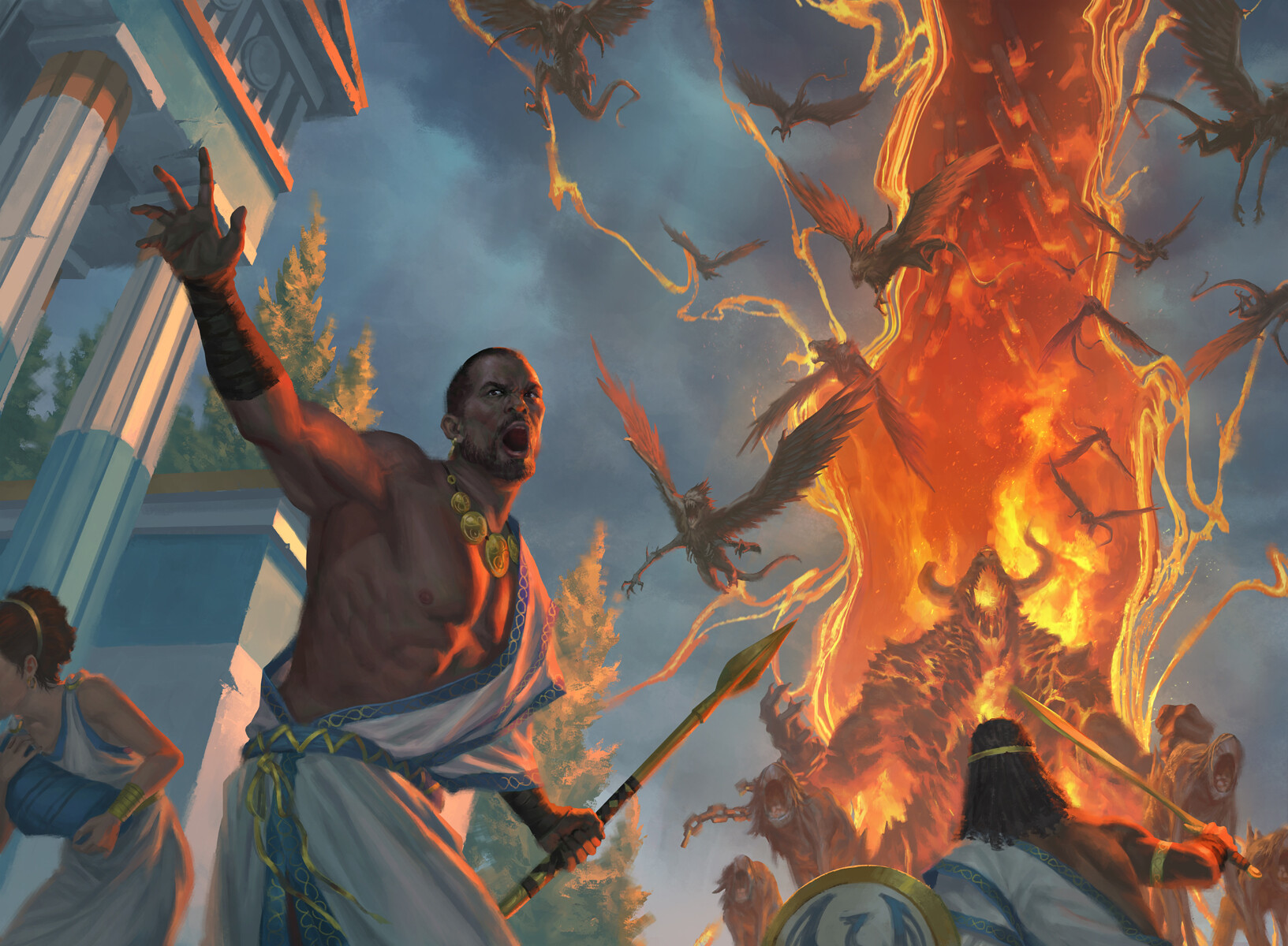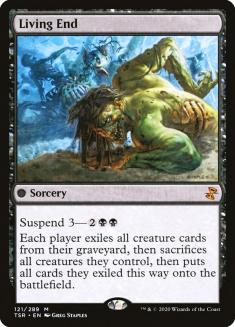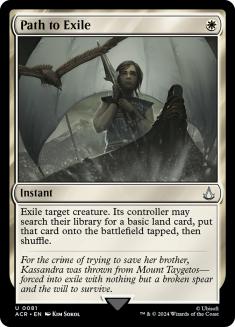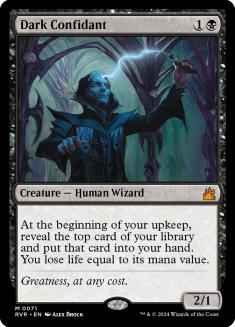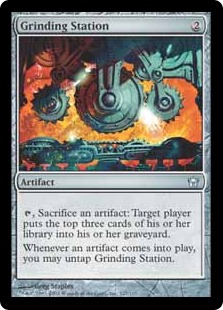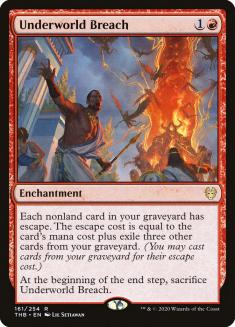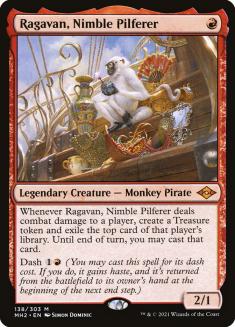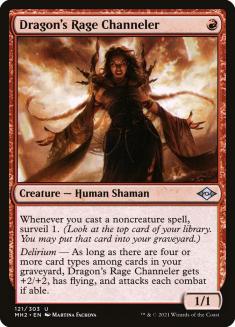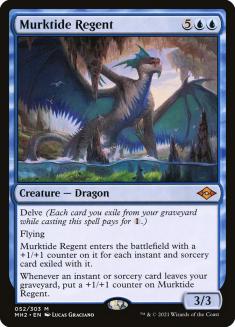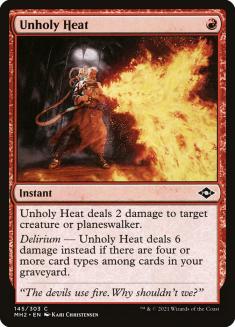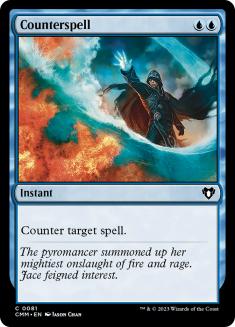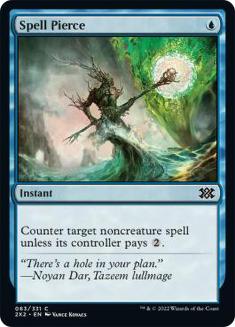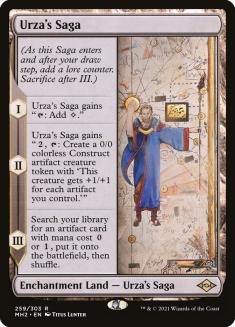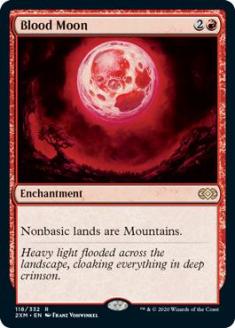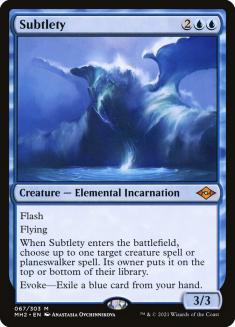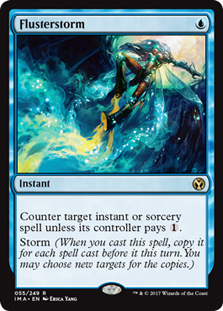Competitive Modern continues to evolve in the most interesting way. Unlike in other formats, Modern decks rarely fade into complete obscurity as new weapons enter the card pool. In Modern, there is a floor of power level that will keep certain cards and strategies viable, which could potentially lead to a stagnant metagame. That is fortunately not the case, due to the sheer number of options that fall into that category.
The Modern Horizons sets, both of them, have changed the game for better or for worse. Modern is now at the mercy of these injected cards, meaning decks must be built around them to be competitive in the format. The powerful cards before these dedicated sets are still seen in various Top 8s; however, the vast majority of the foundational cards are relatively new. It is refreshing to see Living End win an event, and that will happen from time to time. To put up consistent results, utilizing those Modern Horizons cards is the easiest path to take.
Even in my beloved Azorius Control, the majority of cards are from the last few years. It feels like just yesterday when I was gritting my teeth and casting a Path to Exile, targeting Dark Confidant on my Turn 1. Through horrific plays like that, I still found great success in competitive play. The floor was low enough for the control world to jump for joy when the unbanning of Jace, the Mind Sculptor took place. Thinking back, I would have traded that exciting event to return to the reduced power level of old. Azorius Control is different now and does win periodically, but more luck is required to do so against this field.
Once More unto the Breach
When the Modern metagame evolves, it does not discard old decks entirely in favor of the new. The format is still quite expensive, and even if an older deck was not putting up favorable results, there are modifications to make it Tier 2 or Tier 3. To be Tier 1, though, that calls for the broken cards, prompting me to return to Jeskai Breach. This combo deck has the arsenal to become aggro, midrange, or control if needed, making it the perfect Swiss Army knife for competitive play.
That was until I saw versions without Grinding Station, leaving me temporarily confused.
I know the combo could be fairly clunky, drawing the do-nothing Grinding Station throughout the game. Even when that occurred, I understood that is the nature of the combo beast. A lonely combo piece should not be game-breaking on its own, regardless of the era we are analyzing. This personal line of logic failed after the first Underworld Breach I resolved for value. That game, and many others, were won by the non-combo elements of the deck. I still had a hard time justifying cutting the Grinding Station, since its mere existence caused excruciating decision paralysis for my opponents.
Jeskai Breach is very difficult to play against, which is part of the reason why it has been so dominant. Although it does not have a ton of first places, it is converting a ridiculous number of strong finishes in total. I lump in Izzet Breach with Jeskai Breach, because they are essentially the same deck. Any version, piloted by a trained professional, is a near shoe-in to make the elimination rounds. I thought that was based on the multi-pronged combo attack, but it seems the raw power of the value cards make Grinding Station obsolete.
An Izzet Breach Build
Creatures (12)
Lands (19)
Spells (29)
- 3 Lightning Bolt
- 3 Counterspell
- 4 Mishra's Bauble
- 3 Spell Pierce
- 3 Underworld Breach
- 4 Expressive Iteration
- 1 Dress Down
- 4 Unholy Heat
- 4 Consider
Sideboard

This version of Izzet Breach, piloted by Kenneth Oswald, is fantastic. I fell in love with the list the moment I saw it, as it looks like the best from Izzet Breach and Izzet Murktide. Izzet Murktide is arguably the strongest deck in Modern now, but it can have difficulty regaining momentum when its initial threats are dealt with. That deficit is ignored by Underworld Breach, where the controller can replay the plethora of cheap threats in the mid- and late-game.
Ragavan and Rage
This deck is closer to Izzet Murktide than any Underworld Breach variant. The blue disruption and additional red removal spells give it that control vibe I yearn for. It does feel a bit dirty to cast Ragavan, Nimble Pilferer and Dragon’s Rage Channeler; however, these creatures provide that power level floor I previously discussed. Ragavan is too good, and I get jealous when my opponent is dashing it all around, getting Treasure and casting my spells. This style of deck provides the perfect opportunity to dip into their game, while having blue disruption to close out games.
Third Path Iconoclast
What makes this version of Izzet Breach truly unique is the inclusion of Third Path Iconoclast. The new Young Pyromancer makes 1/1 artifact creature tokens, an ability that pairs perfectly with Urza’s Saga. Not seeing the land in Oswald’s deck made me sad, but I understand why. The manabase of Izzet Midrange decks is a bit strained, especially when only playing nineteen lands.
I cannot help but include Urza’s Saga in decks with Underworld Breach, Mishra’s Bauble, and now Third Path Iconoclast. Before I craft my version of this deck, I do want to give his a whirl. In my next Modern article, I will have a tested version that uses Urza’s Saga and a few one-of artifacts to search up. When including a creature like Third Path Iconoclast, I feel the urge to get big Constructs onto the battlefield.
With Dragon’s Rage Channeler, Consider, Mishra’s Bauble, Expressive Iteration, and cheap interaction, Underworld Breach will have no problem taking over the mid- and late-game. It is truly liberating to cast that spell without having the internal debate over holding it for the other combo piece or casting it for value. In this deck, it is always cast for value and should be glorious. The full graveyard requirement separates this from Izzet Murktide, a deck that does not allow Underworld Breach the fuel that it needs.
Murktide Regent
Murktide Regent is a very powerful creature that obliterates the controller’s graveyard upon cast. With that as the flagship threat, Underworld Breach is a non-starter. Between the two, I lean toward the enchantment in terms of raw power. A single Solitude or Teferi, Time Raveler can dispatch the expensive threat. With Underworld Breach, it could take a pile of removal spells, which even then would not cancel out the obtained value. With four mana up, multiple creatures can hit the battlefield and removal can nuke enemy creatures. Between the two, it is an easy vote for me and I am with Oswald on this one.
Unholy Heat
The removal package is strong and I would likely run with what Oswald came up with. Unholy Heat is great, especially in a deck that keeps its graveyard around for a while. It is the answer to a diverse set of threats in the Modern format, while Lightning Bolt has fallen to a supplementary role. Beyond these two removal spells, it doesn’t take much else to handle early-game threats. Izzet Breach’s hope is to have strength early on and lean heavily on the blue disruption and its threats as the game progresses.
Countermagic
Counterspell makes an appearance in this list as a three-of, something I would change in my version. Spell Pierce is mana-efficient and often impactful; however, it is not an equal to the best in the business. This deck can easily have two resources open, especially if Ragavan gets going early. Even if it does not, there are Turn 3 series that would allow for an additional threat with Counterspell open. It is an easy switch to four copies of Counterspell and two of Spell Pierce, a small modification that should pay off dividends.
Urza’s Saga
Past the Spell Pierce count and the inclusion of Urza’s Saga, the maindeck is something I can absolutely get behind. This is the evolution of the Modern metagame in a nutshell. It is difficult to go wrong in competitive play if you are summoning Ragavan and Dragon’s Rage Channeler while defending them with cheap interaction. In this flavor of Izzet Breach, that happens without having the opportunity to draw a dead, two-cost artifact.
Blood Moon
The sideboard is also very strong as is, and I like most of the cards in it. This is the perfect Blood Moon deck, a card that I immediately looked for when clicking on the list. Blood Moon is still a game-ender, a card I hate to love. I will use any excuse to include it in every deck that can cast it because of how powerful it is across the metagame. Even in decks that can answer it, there are some draws that contain only nonbasic lands and they can do nothing. Izzet Breach is a Blood Moon deck and I am here for it.
Fury and Subtlety
I am going to test this list thoroughly before making any cuts, but I have my doubts about Subtlety and Flusterstorm. I am excited about Fury in this deck, since the majority of cards that pitch to it are removal spells that lose their value later in the game. Even in the early-game, pitching a Lightning Bolt to it to take out two threats is just fine. Subtlety is much lower on the power level scale than its red competitor, making it a rare requirement in most matchups. If we want two broken creatures, I would add another Aether Gust instead.
Flusterstorm and Mystical Dispute
Flusterstorm is another card I rarely play because of the existence of Spell Pierce and Mystical Dispute. Those are my favorite options for cheap, blue disruption in Modern. There are some scenarios where Flusterstorm outperforms them, but I really like the increased range of matchups that Spell Pierce and Mystical Dispute can hit.
The rest of the cards in the sideboard match the gameplan perfectly and I am very excited to get to testing with it. There is a chance that Urza’s Saga is a bust, Flusterstorm is broken, and Counterspell is mediocre. Oswald did well in this event and clearly has a grasp of what it takes to win in Modern. If so, my next visit to the format will confirm those choices.

